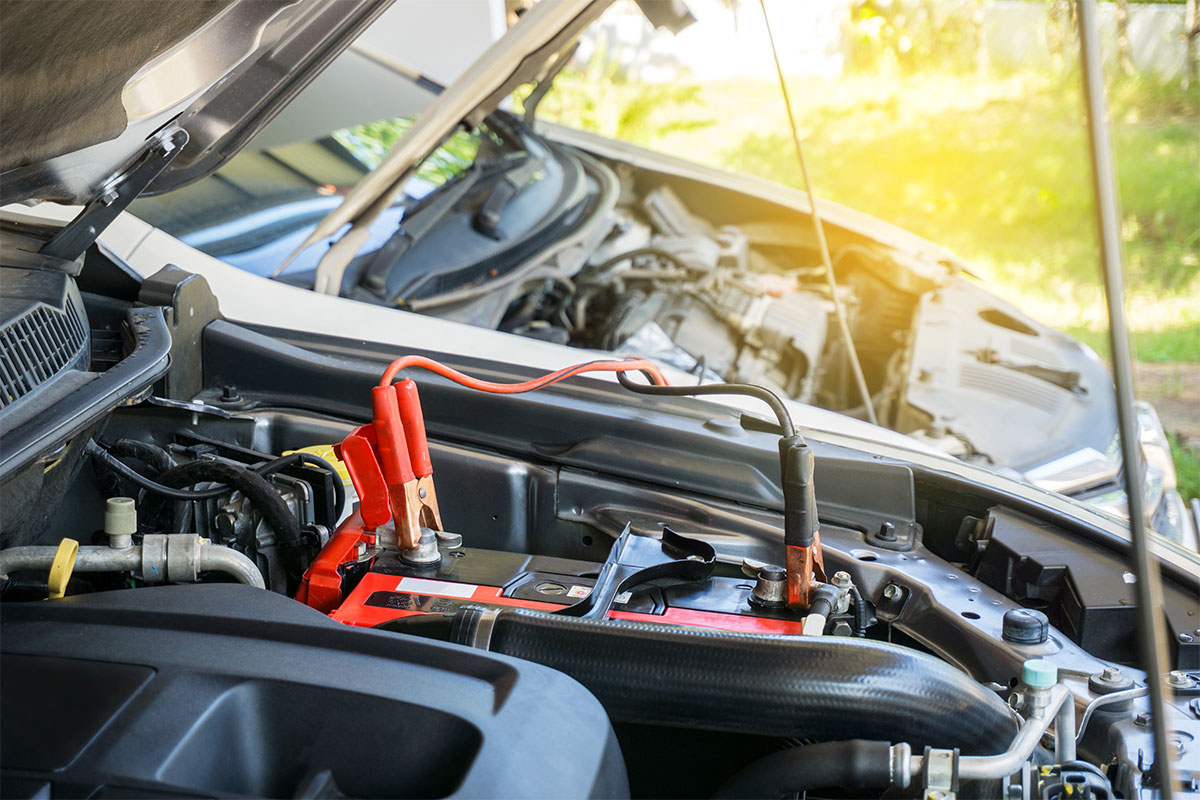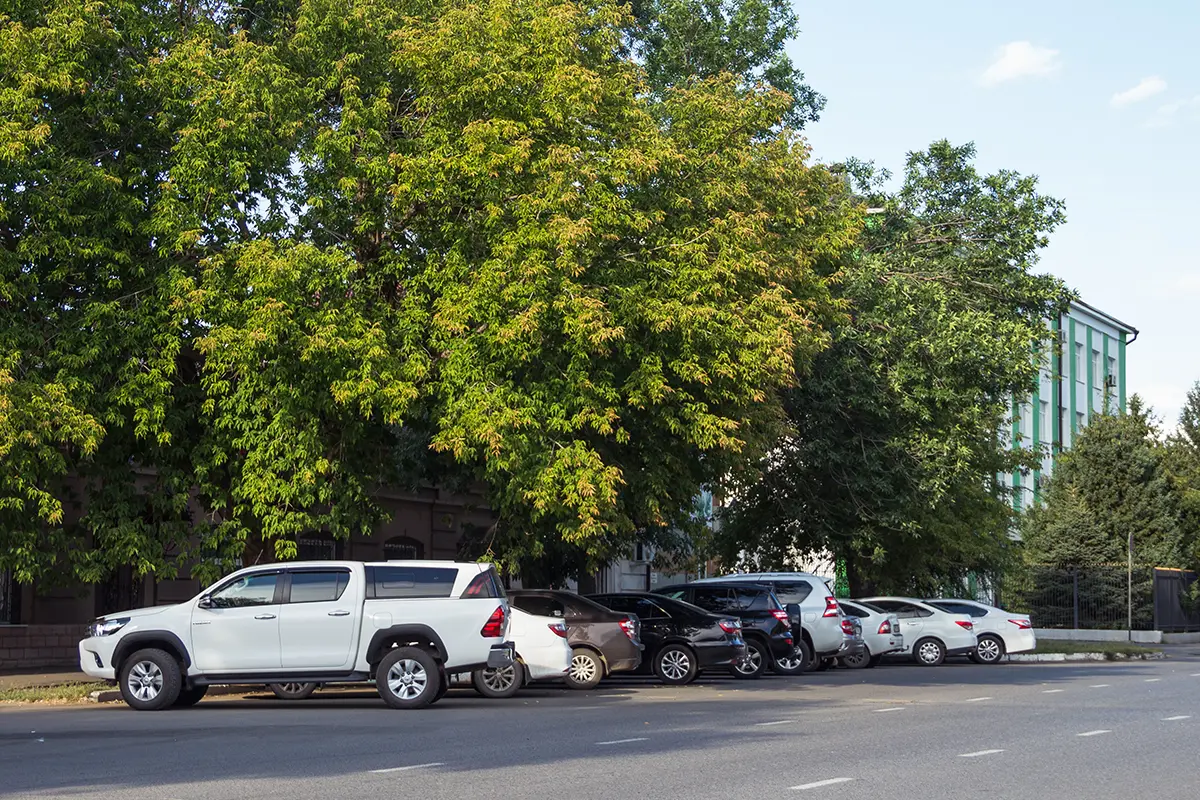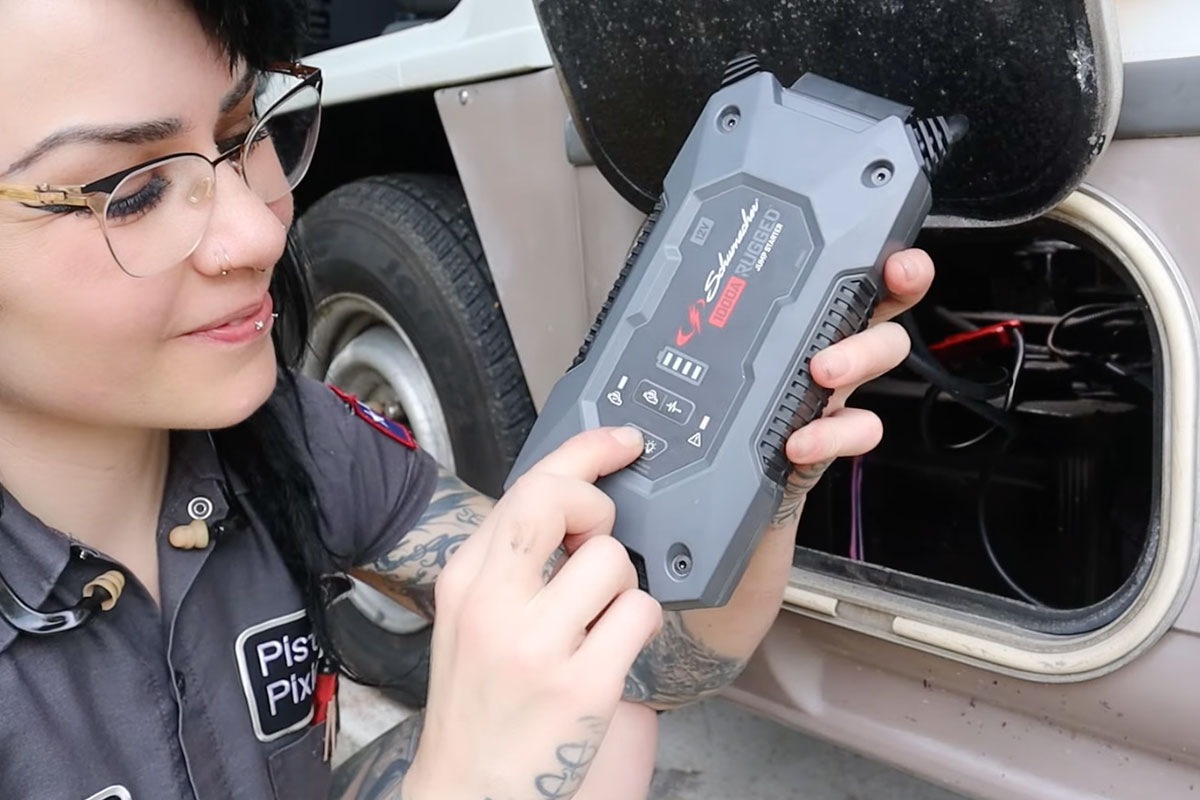It’s National Car Care Month! Follow These 12 Steps for Easy Battery Maintenance
Since it’s National Car Care Month, I got to thinking about automotive maintenance and the many mistakes I made as a car owner in my teens and twenties. When I was a new driver, my parents ensured I knew the basics of auto maintenance. I learned how to change a tire, how to jump a […]

Since it’s National Car Care Month, I got to thinking about automotive maintenance and the many mistakes I made as a car owner in my teens and twenties. When I was a new driver, my parents ensured I knew the basics of auto maintenance. I learned how to change a tire, how to jump a battery, and even how to change my oil. But if you’re like me you never learned anything about routine battery maintenance. For most of my life, I assumed that my battery was a maintenance-free component of my vehicle. My car either started or it didn’t. If it didn’t start, I either needed a jump start or a completely new battery. That was the complete extent of my battery knowledge.
In the years since, I’ve learned that proper battery care involves more than just also making sure you turn your headlights off when you turn off your ignition. Here are 13 steps for easy battery maintenance.
1. Clean the battery terminals
Dirty or corroded battery terminals are a leading cause of battery failure. Corrosion can hamper power flow from your automotive battery. In extreme cases, it can be extreme enough to prevent the battery from providing enough power to start your vehicle. Corrosion can also cause the terminals to overheat, which can cause damage to the battery and battery cables.
To clean your battery terminals, start by identifying the positive and negative terminals. Completely disconnect the battery, starting with the negative terminal followed by the positive terminal and making sure that neither of the battery cables touch metal during the process. Make a mixture of equal parts baking soda and water. Apply the mixture with a hard-bristle brush to both battery terminals. When finished, wipe the terminals down with a wet rag, removing all the baking soda and water mixture. Then wipe with a dry cloth. Reconnect the battery cables, starting with the positive terminal.
2. Use terminal spray to prevent future corrosion
An easy way to help prevent the buildup of dirt and corrosion on your battery terminals is to use a battery terminal spray. After cleaning your battery terminals as explained in step 1 and before reconnecting the battery cables, simply apply the terminal spray to both battery terminals and the terminal ends of your battery cables. Then reconnect the battery cables.
3. Make sure the battery and cables are tightly secured
Too much vibration can damage batteries and battery cables. Make sure everything is tightly secured to prevent this from happening.
Start by opening the hood and carefully shake the battery. If there is no movement, you’re finished. If the battery moves, then your battery hold-down is probably loose. Tighten any bolts securing the hold-down and check to see if this has eliminated all battery movement. There are a variety of different hold-downs ranging from a simple bar across the top of the battery, to a hold-down pad at the base of the battery. If this doesn’t eliminate movement in your battery or if your hold-down is damaged, replace the hold-down.
4. Keep the battery warm
When the battery drops below the freezing point, your battery faces a host of challenges. However, it comes down to this. Your battery must work harder in winter and cold climates. One contributing factor to this is that cold temperatures reduce battery capacity, meaning that it is harder for the battery to generate the amount of energy needed to crank the engine and activate the starter motor. In fact, batteries lose about 20 percent of their capacity when the temperature is around 32°F and it gets worse the lower the temperature falls.[1]
During cold weather, your battery also recharges at a slower rate, requiring more time for the alternator to fully recharge the battery. Cold temps also equal more demand on your battery. Each accessory draws power and running your heater, defroster, or windshield wipers will increase the demand for power, which lengthens recharging time even further. Finally, when temperatures are low engine oil thickens, so your car battery must work harder to crank your engine.
One way to combat the drain cold temperatures cause, is to keep your battery warm. A battery heater is a simple way to do this. Some battery heaters are similar to a heating pad that you might use on a sore back but are instead wrapped around your battery to insulate it and heat your battery to a temperature above freezing. They generally will plug into any standard AC outlet. Other battery blankets are simply an insulated fabric that wraps around the battery.
In addition, some jump starters and battery chargers are equipped with pre-heating technology to warm your battery prior to starting or jump starting. For example, the Schumacher SL1648 Rugged Lithium 1250A Jump Starter warms the battery, making it possible to jump start even in extremely cold temperatures.
5. Check battery fluid levels
The are several common automotive battery types, including lead-acid wet cell (also known as standard lead-acid), lead-acid gel cell (or dry cell), absorbed glass mat (AGM), lithium-ion (Li-ion), and Nickel-Metal Hydride (NiMH). Of these battery types, lead-acid wet cell are the most common and the only type that will need to have its battery fluid levels checked. If you’re unsure of what type of battery you have, check the battery itself. It should be clearly labeled.
Before you get started, make sure you’re wearing gloves and protective eyewear. Then look at the labeling on the battery for any warnings or indications whether the battery can be opened and serviced. Once you confirm that your battery can be watered, check the water level in your battery. There should be just enough water to cover any exposed plates. If the plates are covered, close any caps or coverings you’ve opened, and then you’re done.
If any part of the plates are exposed, you will need to completely charge your battery before continuing. You can use a product like the Schumacher SC1280 15A 6V/12V Fully Automatic Battery Charger and Maintainer to do this. Then, add enough distilled water to completely cover the battery place but not reach the bottom of the vent. Do not over water. This can cause the battery to overflow and reduce the battery’s capacity and performance.
6. Reduce load when the vehicle is turned off
An easy way to be kind to your battery and prevent damage is to unplug devices when the car isn’t running. Leaving smartphones, GPS navigators, and other accessories plugged in can drain power, leaving you with a dead battery. It’s also a good idea to turn off headlights and interior lights when you turn off your engine. They will also drain power from the battery. Also, make sure you start your car before turning lights back on, which reduces the strain on your battery during starting.
7. Avoid short trips and drive your car regularly
Your car battery will recharge as you drive. How long it will take for a full recharge depends on a range of factors, such as the percent of charge after starting, battery health, the amperage produced by the alternator, and the number of your car’s accessory systems that are running. Short trips often don’t allow your car’s alternator enough time to fully recharge your battery. At least once a week take a 20-30 minute drive to ensure your battery is recharged.
8. Monitor your battery’s output voltage
Test your battery regularly. You can do this with a multimeter or a battery charger that has a built-in battery tester like the CRAFTSMAN CMXCESM253 100-Amp 6V/12V Fully Automatic Battery Charger and Jump Starter. Using a multimeter, connect the red (positive) lead or clamp to the battery’s positive terminal, then the black (negative) lead to the negative terminal. Set the meter to the DC volt setting and check your results. Batteries with a reading of at least 12.4 volts are sufficiently charged and should work as intended.[2] If the battery has a reading below 12.4 volts, attempt to charge the battery. If it cannot be recharged, replace the battery immediately. Alternatively, you can take your vehicle to a professional garage or service center. They have more sophisticated equipment and can quickly tell you if a battery should be replaced.
9. Use a maintainer/trickle charger for stored/unused batteries
If you use your vehicle infrequently or will be storing a vehicle, it’s a good idea to use a battery maintainer or trickle charger. The maintainer is plugged into a regular AC power outlet and delivers power when needed to keep the battery fully charged and in top condition.
If you are looking for a reliable maintainer, a good option is the Duralast 2A 6V/12V Battery Maintainer (DL-2D). The DL-2D battery maintainer is ideal for use with motorcycle, car, and marine batteries and features fully automatic operation
10. Do not overcharge your battery
Overcharging a battery will negatively impact its health and longevity. Most fully automatic battery chargers on the market today are intelligent enough to detect when your battery is fully charged and will stop feeding power to it. However, some older chargers/maintainers or manually operated units cannot detect a full battery and will keep sending power past the point where it is fully charged. To avoid this, look for a battery charger and/or maintainer that features float mode monitoring, which ensures that once a battery is fully charged that the unit will only supply power if the battery voltage drops below a certain point.
For a battery charger that employs float mode monitoring, check out the Schumacher Pro 12V Battery Charger and 80A Jump Starter (SPR1629).
11. Properly maintain your entire vehicle
Your battery is just one part of your vehicle. All your vehicle’s systems must work together for optimum performance. Routine maintenance such as regular oil changes and replacing spark plugs can have a positive impact on battery health.
12. When buying a new battery, check the manufacture date
When it is time to replace a battery, make sure you check the date of manufacture and purchase a battery no more than one month old. You don’t want to purchase a battery that has already lost a good portion of its service life sitting on a shelf in your local auto parts store. Buy your battery at a high-volume seller that always has fresh stock and check the manufacture date on the battery before you complete your purchase.
Add battery care to your routine vehicle maintenance
Now that you know how to care for your car battery, it is easy to apply your knowledge and add battery care to your car’s regular maintenance schedule.
Warning signs of battery problems
While your battery might die abruptly, usually there are signs that it may be struggling. The following are four signs that your battery may need to be replaced soon.
1. Grinding or clicking sound when you crank the ignition
The most common reason for the rapid clicking sound when you try to start your vehicle is a bad battery. The clicking noise can be caused by the starter motor pinion gear connecting with the flywheel because your battery doesn’t have the power needed to spin the engine.[3] The first thing you should check is if your battery is still good. If it is, you can probably just jump start the battery. If the battery is bad, the problem can be eliminated by simply replacing the battery.
2. It takes longer for your engine to start
This most likely indicates a weak battery. Your battery may be reaching the end of its lifecycle or have another issue that has impacted its health. Have your battery tested and replaced if needed.
3. Headlights dim when idling and then brighten when you rev the engine
A common reason for headlights that dim during idling but brighten when the engine is revved is a low voltage supply.[4] Start by checking the battery. Are the battery terminal connections secure? If they are, check the battery to see if it needs to be replaced. Often, replacing the battery will fix the issue. However, in some cases dim headlights can indicate a problem with the alternator or your car’s charging system.
4. Your battery is old
No battery will last forever. Most automotive batteries will last for 3 to 5 years. So, if your battery is on the older side of that range it may need to be replaced.
[1] “How to Help Prevent 4 Common Cold Weather Battery Issues,” Firestone, https://www.firestonecompleteautocare.com/blog/batteries/preventing-winter-battery-issues/, Accessed 5 April 2023.
[2] “5 Ways to Extend the Life of Your Car Battery,” Reader’s Digest Canada, https://www.readersdigest.ca/cars/maintenance/extend-life-car-battery/, Accessed 5 April 2023.
[3] Lacivita, Bob, “Why is My Car Making a Clicking Noise When Starting?,” Family Handyman, https://www.familyhandyman.com/article/car-clicks-when-starting/, Accessed 5 April 2023.
[4]Why do my dim headlights brighten only when I rev the engine?,” Torque, https://www.torque.com.sg/advice/why-do-my-dim-headlights-brighten-only-when-i-rev-the-engine/, Accessed 5 April 2023.




